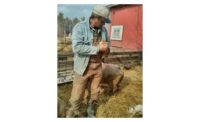USDA survey studies forest and grazing conservation practices
USDA mails its Conservation Practice Adoption Motivations Survey to 43,000 forest and grazing landowners and managers across the nation.

In summer 2024, the Conservation Practice Adoption Motivations Survey, a joint project between USDA’s National Agricultural Statistics Service and Natural Resources Conservation Service, will be mailed to 43,000 forest and grazing landowners and managers across the nation. The Conservation Practice Adoption Motivations Survey gathers information to understand why people choose to use different conservation practices, and whether they continue to use practices over time. The data will help improve voluntary conservation programs. NASS will mail an invitation to respond early online at agcounts.usda.gov starting June 24, 2024. NASS will mail questionnaires on July 8 with the option for survey recipients to respond online, by mail or fax. If NASS does not receive completed questionnaires by July 28, they may reach out to schedule interviews. A data highlights publication is scheduled for October 2024 and will be published at nass.usda.gov.
Four different overall conservation categories are researched through the Conservation Practice Adoption Motivations Survey: crop practices, confined livestock practices, grazing practices and forestry practices. For 2024, NASS will survey grazing practices and forestry practices. Crop practices and confined livestock practices were surveyed in 2022. The grazing sample respondents are randomly selected from NASS records of operations that meet the grazing land criteria. The forestry sample respondents are determined by the USDA Forest Service area frame determination of wood or forest landowners.
“By responding to CPAMS, you can help shape the future of conservation, agriculture, and forestry,” said NASS Administrator Joseph L. Parsons. “With better data to help us understand how conservation fits into existing agriculture and forest management operations, program resources can be focused on where they will be most effective. I encourage everyone who receives a CPAMS questionnaire to respond.”
Protected by federal law, responses are confidential and used for statistical purposes only. No single respondent can be identified from the published data.
“Your input will help improve our voluntary conservation programs, including technical and financial assistance,” said NRCS Chief Terry Cosby. “By responding to CPAMS, you also help document and give credit to your ongoing stewardship of America’s agricultural forest land resources.”
Previous CPAMS data are available on the highlights page of the NASS website. Those needing help with the CPAMS questionnaire can call 888-424-7828.
Source: USDA's NASS
Looking for a reprint of this article?
From high-res PDFs to custom plaques, order your copy today!





